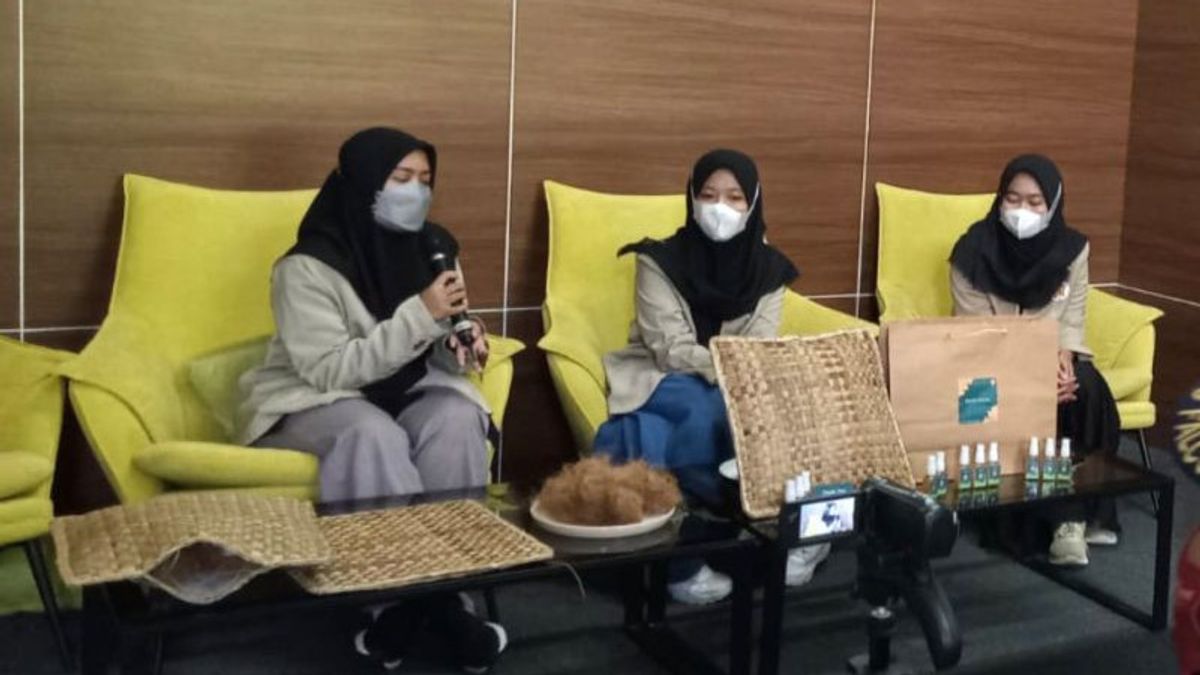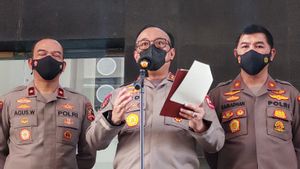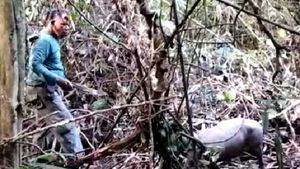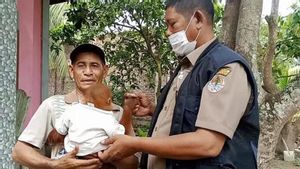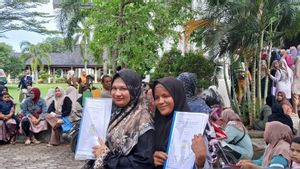YOGYAKARTA - Five students from Gadjah Mada University (UGM) created antibacterial and mite-proof pillows made from coconut husk, water hyacinth, and betel leaf extract.
UGM Vocational School student Marsyela Tri Aryani said the idea for making pillows stems from concerns about the eutrophication of water hyacinth plants which damage waters because of their relatively fast growth, and a large amount of coir waste in the community that has not been utilized properly.
"We want to process these wastes and think about developing products that are closely related to human needs from those two wastes. Then, the idea of making pillows came up," she said during a press conference at the UGM Fortakgama Room in Yogyakarta, Antara, Friday, September 2.
The product, named 'Stork (Antibacterial and Mite Pillow) was designed by Marsyela with Silvia Rahmawati, Alda Anisah, and Rizal Aziz Pradana from the Vocational School UGM, and Luthfia Uswatun Khasanah from the Faculty of Biology UGM.
After conducting a literature review from a number of journals, they found the fact that water hyacinth has the potential as a medicinal plant.
The five students designed antibacterial and mite pillow products with natural concepts. They make pillows with 100 percent natural ingredients from the filling to the outside of the pillow so that they not only solve environmental problems but also present products that are beneficial to health.
Water hyacinth, she said, contains active compounds of phenols, flavonoids, tannins, alkaloids, terpenoids, steroids, and glycosides that have biological roles as antioxidants, antifungals, antibacterials, and anti-cancer.
The production of the antibacterial pillow, she said, begins with weaving dry water hyacinth into small or medium coils. Next, the woven pillow is boiled with betel leaf extract so that the extract can be evenly mixed in the plait.
After that, drying and re-spraying the betel leaf extract evenly, then the plaits are put in plastic for 12 hours so that the betel leaf extract soaks in the matting.
"Furthermore, coconut fiber is processed as a pillow stuffing material. Processing is to change the coarse coconut husk into a texture that almost resembles wool or yarn," she said.
According to her, betel leaf is an important element in making antibacterial pillows because it contains compounds that act as antibacterial, namely saponins, tannins, flavonoids, and phenols.
Betel leaf also contains essential oil, namely clavikol which acts as a deadly agent for Sarcoptes scabiei in stopping the activity of mites so that the wound surface does not deteriorate.
The last stage, she said, was to include wool fiber from coconut coir and waste kapok seeds to increase the volume of the pillow before sewing.
Stork products are made in a rectangular shape measuring 35x35 cm in brown color with natural and traditional nuances.
Silvia Rahmawati said that Stork care is quite easy because there is no need to put on or change pillowcases.
Pillows, she said, just need to be dried under the hot sun and then given an antibacterial spray and aerated.
In addition to having a health function, according to her, the pillow also supports efforts to optimize the use of biological resources in Indonesia, as well as being environmentally friendly.
"Storks are present as an alternative to cotton and synthetic pillows which are expected to improve the user's sleep quality and feel safe because there are health functions as antibacterial and mites," she said.
SEE ALSO:
The five UGM students sold a package of Stork products accompanied by a 30 ml antibacterial spray directly or through an online shop for IDR 115,000.
The English, Chinese, Japanese, Arabic, and French versions are automatically generated by the AI. So there may still be inaccuracies in translating, please always see Indonesian as our main language. (system supported by DigitalSiber.id)
